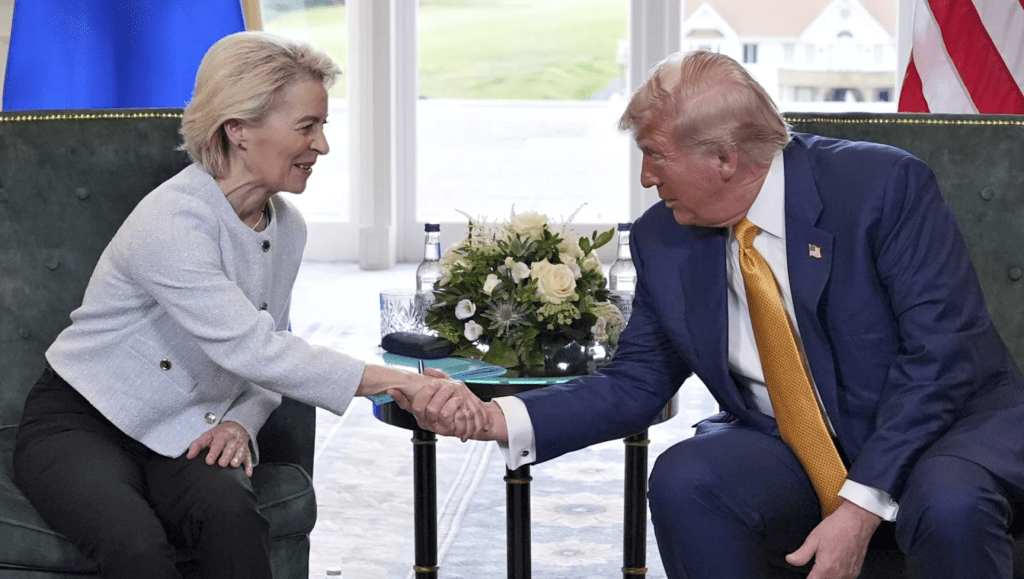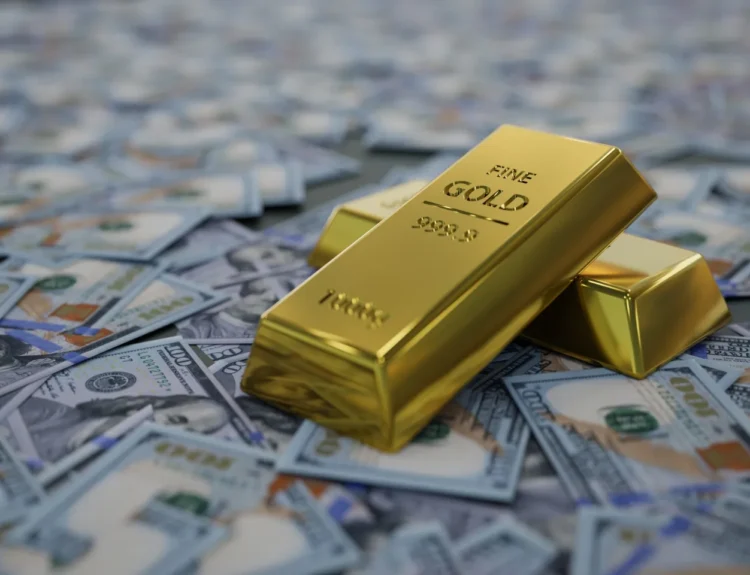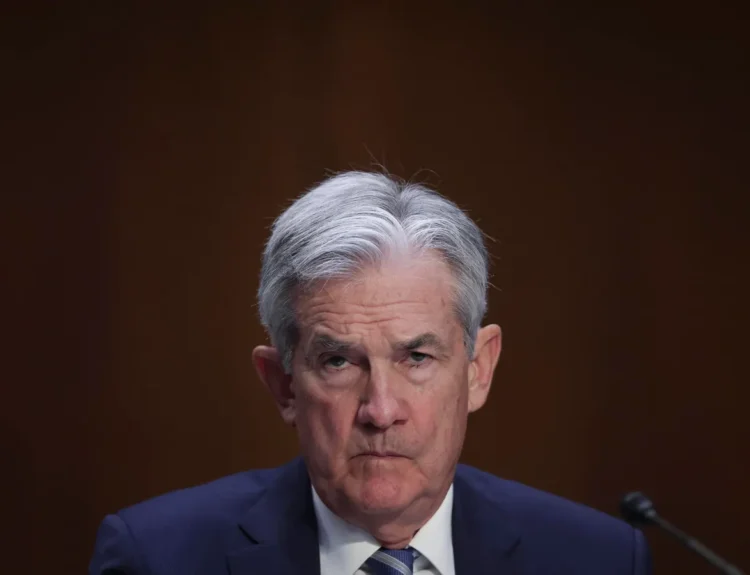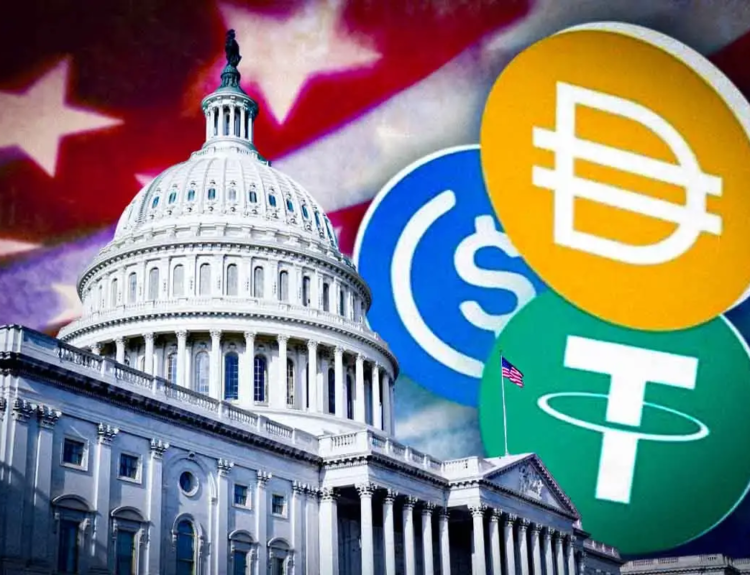With just days left before the August 1 tariff deadline, President Trump’s trade team is moving rapidly to finalise sweeping tariff deals with Europe and China. The EU has agreed to a new 15% baseline tariff deal amid mounting criticism, while US–China talks in Sweden are edging toward a 90-day truce extension. But confusion, contradictions, and geopolitical stakes remain sky-high.
US–EU Trade Deal Finalised — But Is It Fair?
The United States and the European Union reached a framework agreement on July 27 in Scotland, where President Trump and European Commission President Ursula von der Leyen unveiled a deal that sets a 15% baseline tariff on nearly all EU goods entering the US starting August 1.
Trump called the deal “the biggest of them all,” while von der Leyen acknowledged that “15% is not to be underestimated, but it is the best we could get.”
However, the agreement has triggered backlash from European leaders, with German Chancellor Friedrich Merz calling the outcome “unsatisfying,” and France’s François Bayrou branding it “a dark day.”

Key Elements of the US–EU Deal:
- 15% baseline tariff on almost all EU goods entering the US (includes cars, industrial goods, semiconductors, pharmaceuticals after review).
- Tariff cuts on EU cars entering the US from 27.5% to 15%; EU lowers its car import duty from 10% to 2.5%.
- Steel, aluminum, and copper tariffs remain at 50%, but a quota system will replace them—details pending.
- Zero-for-zero tariffs agreed for:
- Aircraft and parts
- Generic drugs
- Semiconductor-making equipment
- Some chemicals and agriculture (excludes sensitive goods like beef, rice, poultry).
- Strategic purchases:
- EU pledged $750 billion in energy buys (oil, LNG, nuclear tech)
- $600 billion investment pledge by European companies into the US
- 40 billion euros in AI chip purchases from the US
- Defense and regulatory cooperation: Vague commitment to streamline US pork/dairy certifications and increase defense-related purchases—though the EU insists no formal arms deal was agreed.
“The EU is not buying arms or LNG from Washington directly — these are commercial decisions,” said an EU Commission spokesperson.
“We’re not moving on our food or digital rules. That won’t be part of the agreement.”
The White House, however, continues to portray the investment and military procurement as part of the deal, adding to confusion over what was actually agreed.
US–China Trade Truce Extension Likely, But Final Call Awaits Trump
While deals with Japan and the EU appear mostly finalized, negotiations with China remain delicate and are progressing on a separate track. Talks resumed this week in Stockholm, led by US Treasury Secretary Scott Bessent and Chinese Vice Premier He Lifeng.
Chinese Trade Envoy Li Qiang confirmed that “both sides will continue to push forward an extension of pause of reciprocal tariffs,” and said talks were “candid, in-depth and constructive.”
The 90-day pause agreed in May (after the trade war escalation in April) is set to expire on August 12, with both sides now expected to extend it another 90 days.
“Still some technical details to work out,” Bessent said. “Trump will have the final say.”
Commerce Secretary Howard Lutnick echoed that sentiment, saying an extension is “likely”, though Trump is not seeking a summit with Xi Jinping at this time.
Current US–China Tariff Situation:
- 30% US tariffs on Chinese goods
- 10% Chinese tariffs on US goods
- Pause agreement in May cooled tensions but was set to expire August 12
- Talks in Stockholm include broader issues:
- AI tech export controls
- Chinese purchases of Russian/Iranian oil
- US market access for Chinese firms
- Fentanyl-related substances
- IP theft and chip policy
“The fact that we are meeting regularly gives us a good footing,” said US Trade Rep Jamison Greer.
“Whether there’s a deal or not, I can’t say. But it’s constructive.”
A final agreement would likely require high-level approval, and Trump hinted he may visit China if invited, but ruled out initiating a summit himself.
Global Fallout: Confusion, Contradictions, and Geopolitical Power Plays
The rollout of Trump’s aggressive trade agenda — dubbed “Liberation Day Tariffs” — has now led to realignment deals with Japan, the EU, and likely China, yet criticism is mounting about the rushed process and lack of clarity.
In the EU–US deal, for example:

- The White House claims pharmaceuticals face 15% tariffs.
- The European Commission says they remain at 0% pending a Section 232 review.
- The White House says the EU pledged $600B in investment.
- The EU says that’s an “expression of intent” by companies — not a government commitment.
Even in energy, the $750B figure appears aspirational.
“The Commission cannot legally bind the bloc to that level of purchases,” one EU official clarified.
Meanwhile, the Brazil–US talks are underway with reports of a possible 50% flat tariff deal emerging — far higher than what the EU or Japan received. Trump is also reportedly preparing 35% tariffs on some Canadian goods not covered under USMCA.
What’s Next?
With the EU deal confirmed and a China truce extension likely, Trump’s global tariff regime is taking shape:
- August 1: US–EU and US–Japan deals go into effect
- August 12: Likely new 90-day US–China truce announced
- Rest of world: Trump says new tariffs will fall in the 15%–20% range
- Canada, India, Brazil: Talks ongoing, risk of higher flat tariffs if deals stall
“The price of a deal with the US is open markets,” said Commerce Secretary Lutnick.
“Trump can set the price — and move on.”
But with contradictory narratives between Washington and Brussels, and Beijing’s willingness to retaliate if pushed, the new trade order remains volatile.
Markets are watching closely. So is the world.
Disclosure: This article does not represent investment advice. The content and materials featured on this page are for educational purposes only.
Related:
Global Markets Kick Off Tuesday With Cautious Optimism: Market Wrap
Market Is Euphoric Again — and Everyone Knows It
Wall Street Keeps Breaking Records, But Big Tests Are Looming
Tariff Shock Incoming: Trump’s August 1 Deadline to Hike Prices on Food, Clothing, and Cars
Hottest Business Strategy This Summer Is Buying Crypto
Accidental King of Meme Stocks: How a Canadian Hedge Fund Manager Sparked 2025’s Retail Rebellion










